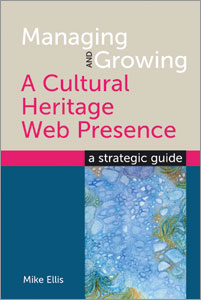
Primary tabs
You don't need to be an ALA Member to purchase from the ALA Store, but you'll be asked to create an online account/profile during the checkout to proceed. This Web Account is for both Members and non-Members.
If you are Tax-Exempt, please verify that your account is currently set up as exempt before placing your order, as our new fulfillment center will need current documentation. Learn how to verify here.
- Description
- Table of Contents
- Reviews
This timely book guides the reader through the best approaches to developing or maintaining a cultural heritage Web presence. It includes tips and best practices, along with thorough examples and data from large and small cultural heritage institutions.
Key sections include:
• Evaluating your current Web site
• Content
• Outside your site: RSS, syndication, API's
• Building a Web strategy
• Web policies
• Traffic and metrics
• Budgeting
• Web 2.0
• The Web site project
A companion website provides template downloads, links, white papers, and other up-to-date information.
1. Evaluating what you have now
- Introduction
- The web today
- Who is online and what do they do?
- The internal context
- Summary
- References
2. Building a strategic approach
- Introduction
- What is a web strategy?
- What should a strategy cover?
- Structuring your strategy document
- Evolving your strategy
- The web strategy team
- Regular strategy reviews
- Summary
- Reference
3. Content
- Introduction
- Managing content
- Content outside your site
- Staying informed
- Syndicating content
- Summary
- References
4. Marketing
- Introduction
- From ‘site' to ‘presence'
- Search
- Offline marketing
- Online advertising
- Summary
- References
5. Policies and guidelines
- Introduction
- Policies, procedures and guidelines
- Social media guidelines
- Summary
- References
6. Traffic and metrics
- Introduction
- Measurement techniques
- Metrics software
- What should you measure?
- Metrics definitions
- Watching your metrics
- Reporting
- Other metrics
- Dissemination of KPIs
- The changing face of metrics
- Summary
- References
7. The social web (Web 2.0)
- Introduction
- What is ‘the social web'?
- Why social media?
- Choosing when (and when not) to use social media
- Developing a social media strategy
- Social media channels
- The challenges of the social web
- Risks and mitigation
- Summary
- References
8. The website project process
- Introduction
- Project phases
- Writing a website brief
- The specification
- Working with external agencies
- Project start-up
- Budgeting
- Summary
- References
9. Away from the browser
- Introduction
- Open Data
- Mobile
- Summary
- References
10. Bringing it all together
- Introduction
- Ongoing feedback
- Staying informed
- Summing up
- Bibliography
"This is an important addition to the body of digital heritage literature and a strong indication not just of how far we have come in our practice but of how mature today discussion of this subject is."
— Dr. Ross Parry, University of Leicester
"...offers sounds advice, tips and practical strategies that should prove useful to people in a wide range of cultural sector roles involved in managing and growing web presences."
— Business Archives
"…informative, interesting and well written. The author is especially good at explaining clearly and effectively concepts that people without technical training might otherwise find difficult to understand. Numerous real-world examples are given and relevant research and policy literature pointed to. It will be of use to those working in cultural heritage organisations of all sizes irrespective of whether they have an already established or fledgling web presence."
— Journal of Documentation


